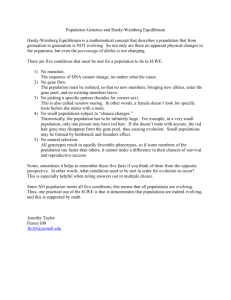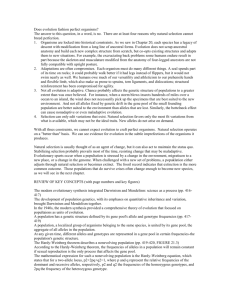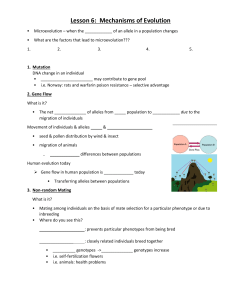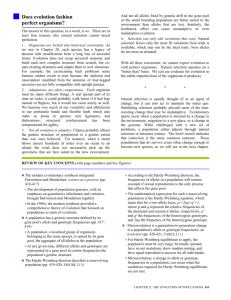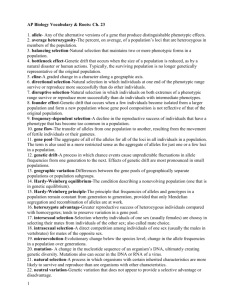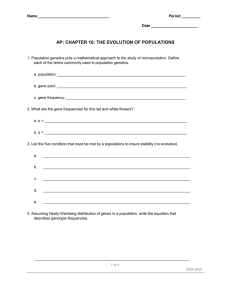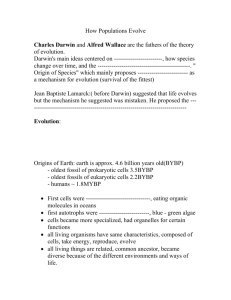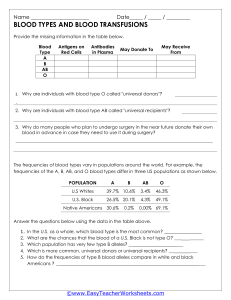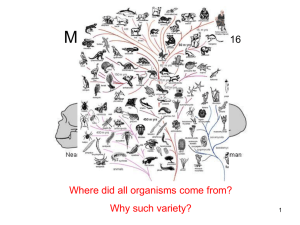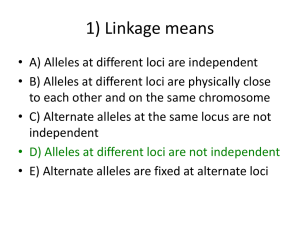the history of life on earth
advertisement
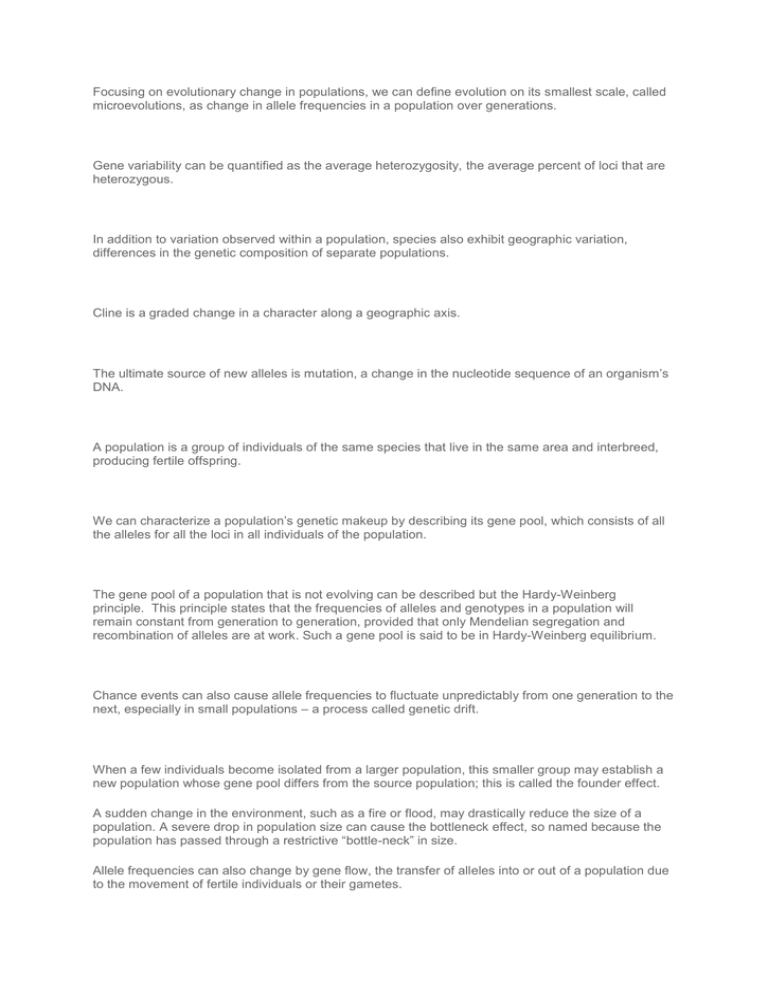
Focusing on evolutionary change in populations, we can define evolution on its smallest scale, called microevolutions, as change in allele frequencies in a population over generations. Gene variability can be quantified as the average heterozygosity, the average percent of loci that are heterozygous. In addition to variation observed within a population, species also exhibit geographic variation, differences in the genetic composition of separate populations. Cline is a graded change in a character along a geographic axis. The ultimate source of new alleles is mutation, a change in the nucleotide sequence of an organism’s DNA. A population is a group of individuals of the same species that live in the same area and interbreed, producing fertile offspring. We can characterize a population’s genetic makeup by describing its gene pool, which consists of all the alleles for all the loci in all individuals of the population. The gene pool of a population that is not evolving can be described but the Hardy-Weinberg principle. This principle states that the frequencies of alleles and genotypes in a population will remain constant from generation to generation, provided that only Mendelian segregation and recombination of alleles are at work. Such a gene pool is said to be in Hardy-Weinberg equilibrium. Chance events can also cause allele frequencies to fluctuate unpredictably from one generation to the next, especially in small populations – a process called genetic drift. When a few individuals become isolated from a larger population, this smaller group may establish a new population whose gene pool differs from the source population; this is called the founder effect. A sudden change in the environment, such as a fire or flood, may drastically reduce the size of a population. A severe drop in population size can cause the bottleneck effect, so named because the population has passed through a restrictive “bottle-neck” in size. Allele frequencies can also change by gene flow, the transfer of alleles into or out of a population due to the movement of fertile individuals or their gametes. Directional selection occurs when conditions favor individuals exhibiting one extreme of a phenotypic range, thereby shifting the frequency curve for the phenotypic character in one direction or the other. Disruptive selection occurs when conditions favor individuals at both extremes of a phenotypic range over individuals with intermediate phenotypes. Stabilizing selection acts against both extreme phenotypes and favors intermediate variants. Sexual selection, a form of natural selection in which individuals with certain inherited characteristics are more likely than other individuals to obtain mates. It can result in sexual dimorphism, marked differences between the two sexes in secondary sexual characteristics, which are not directly associated with reproduction or survival. In intrasexual selection, meaning selection within the same sex, individuals of one sex compete directly for mates of the opposite sex. In intersexual selection, also called mate choice, individuals of one sex (usually the females) are choosy in selecting their mates from the other sex. Selection itself may preserve variation at some loci. Balancing selection occurs when natural selection maintains two or more forms in a population. If individuals who are heterozygous at a particular locus have greater fitness than do both kinds of homozygotes, they exhibit heterozygote advantage. In frequency-dependent selection, the fitness of a phenotype declines if it becomes too common in the population Much of the DNA variation in populations probably has little or no impact on reproductive success, and thus natural selection does not affect this DNA. In humans, many of the nucleotide differences in noncoding sequences appear to confer no selective advantage or disadvantage and therefore are considered neutral variation.
